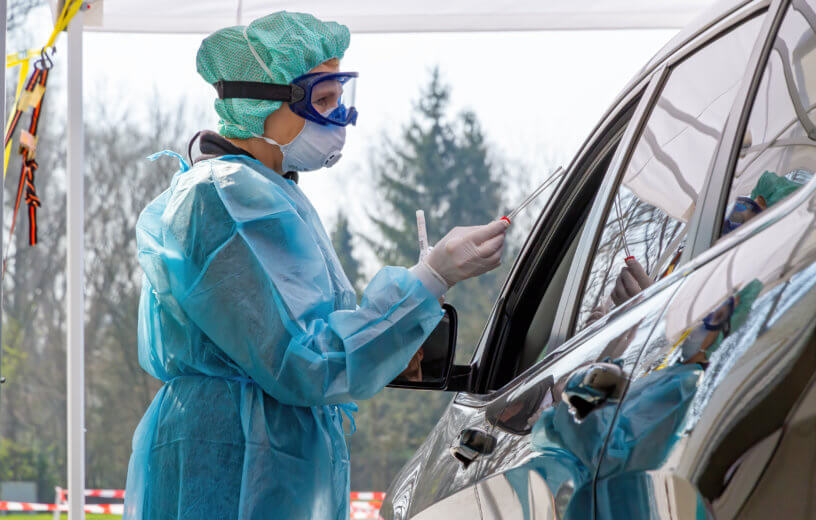BALTIMORE — Ever since the coronavirus pandemic took hold of the country, researchers at the University of Maryland School of Medicine have been trying to engineer nanoparticles that can serve as a diagnostic tool for detecting the presence of COVID-19. Not only does it appear they’ve succeed, but in the process they’ve created a test that can yield results in just ten minutes.
In recent years, bioengineers have sought ways to use nanoparticles for all sorts of medical purposes. Nanoparticles are extraordinarily tiny materials that can perform whatever function they were engineered to do. They are commonly used in medicine as a way to deliver drugs to a person or to detect specific markers in a biological sample.
Last week the researchers announced that they have developed a test that uses plasmonic gold nanoparticles and changes colors in the presence of COVID-19. The great news about this test is that it can detect the virus in as quickly as ten minutes.
“Based on our preliminary results, we believe this promising new test may detect RNA material from the virus as early as the first day of infection. Additional studies are needed, however, to confirm whether this is indeed the case,” says lead author Dipanjan Pan, PhD, a professor of diagnostic radiology and nuclear medicine and pediatrics at the school, in a university release.
All a patient needs to do is provide a nasal swab or saliva sample, and the nanoparticles do the rest of the work. The gold nanoparticles check to see if there is a specific protein present in the biological sample. The protein it looks for is unique to the coronavirus, and acts as a binding site for the nanoparticles. If the nanoparticles detect the presence of this protein then they turn the color of the liquid they are placed in from purple to blue.
The authors describe two major benefits to the nanoparticle diagnostic test over the tests currently on the market. Firstly, many of the tests are not completely accurate and report a lot of false negatives. Beyond that, the diagnostic tests usually require a lot of specialized lab equipment, so hospitals need to send samples out to laboratories to be tested.
“This RNA-based test appears to be very promising in terms of detecting the virus. The innovative approach provides results without the need for a sophisticated laboratory facility,” says co-author Matthew Frieman, PhD, an associate professor of microbiology and immunology.
Dr. Pan created a company called VitruVian Bio to develop the test for commercial application. He plans to apply for an “emergency use authorization” through the FDA so the test can get to market more quickly. There is usually a very long process to get a drug approved, but the FDA has been making exceptions for COVID-19 tests. The test will need to be validated for its performance before its cleared by the FDA.
There is a big need for rapid, reliable and inexpensive COVID-19 diagnostic tests, and the research team hopes their test will fill that void and expand coronavirus testing capacities.
The study is published in the journal ACS Nano.
Like studies? Follow us on Facebook!
